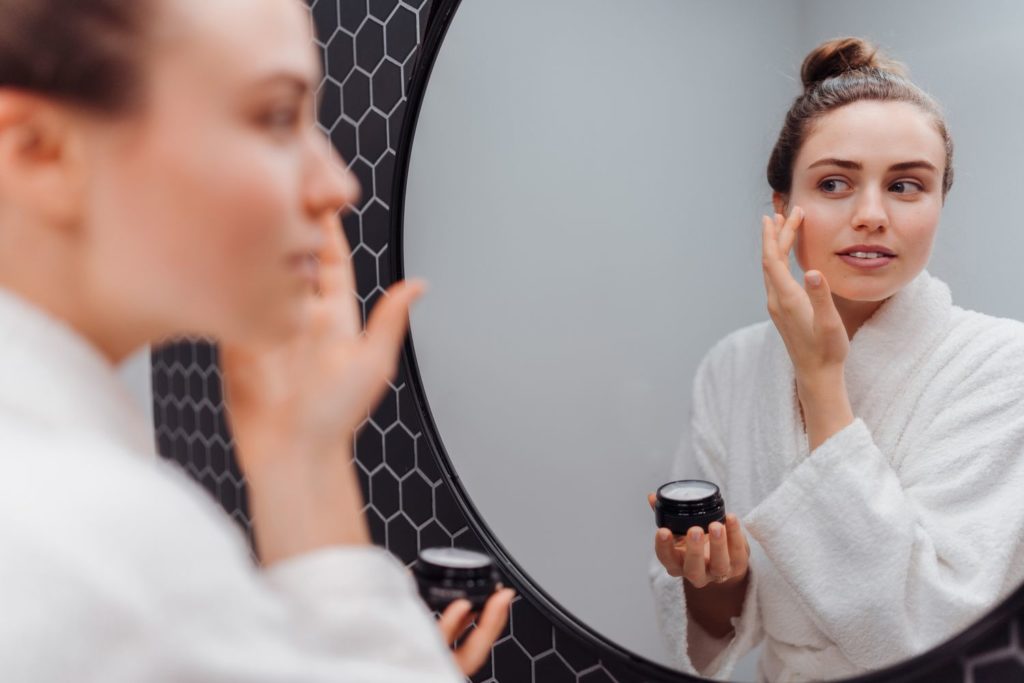- General
- Updated on July 16, 2025
Why Your Skincare Routine Might Be Making Things Worse

Introduction
In today’s beauty-conscious world, skincare routines have become almost ritualistic. From multi-step K-beauty regimens to influencer-approved product hauls, many of us believe more is better when it comes to skincare. But what if your carefully curated routine—filled with cleansers, toners, serums, and creams—is actually harming your skin instead of helping it? Many people unknowingly fall into skincare routine mistakes that disrupt the skin’s natural balance and lead to more problems than solutions.
If you’re dealing with persistent breakouts, irritation, or dullness despite a dedicated regimen, the problem may lie not in what you’re not doing, but in what you are. Let’s unpack how your skincare routine might be making things worse—and what you can do to fix it.
Skincare Routine Mistakes You’re Probably Making

1. Over-Cleansing: Stripping the Skin’s Natural Barrier
Washing your face is essential, but doing it too often—or with harsh cleansers—is one of the most common skincare routine mistakes. Many people, especially those with oily or acne-prone skin, believe frequent cleansing helps reduce oil and prevent breakouts. In reality, over-cleansing can strip the skin of its natural oils, damage its protective barrier, and actually trigger more oil production to compensate.
Signs your cleanser is too harsh:
- Tight or dry feeling after washing
- Increased oiliness shortly after cleansing
- Flaky patches or redness
What to do: Use a gentle, pH-balanced cleanser no more than twice a day. Avoid foaming cleansers with sulfates, which can be particularly drying.
2. Using Too Many Active Ingredients at Once
Retinoids, AHAs, BHAs, Vitamin C, niacinamide—each of these active ingredients can offer major benefits when used correctly. But combining them all in one routine? That’s a recipe for irritation. Layering multiple actives can weaken your skin’s barrier, cause inflammation, and lead to increased sensitivity or breakouts.
Common signs of overuse:
- Redness
- Peeling or flaking
- Burning or stinging sensation
- Breakouts that look like irritation rather than clogged pores
What to do: Simplify. Focus on one active ingredient at a time and introduce it gradually. Give your skin time to adjust before layering or alternating.
3. Ignoring Ingredient Interactions
Not all ingredients play well together. Using incompatible products in the same routine can cancel out their benefits—or worse, inflame your skin. For example, combining retinol with Vitamin C or AHAs with niacinamide can lead to irritation or reduce effectiveness.
Problematic combos to watch out for:
- Retinoids + AHAs/BHAs (can be overly drying and irritating)
- Vitamin C + niacinamide (may reduce Vitamin C’s potency)
- Benzoyl peroxide + retinol (can deactivate each other)
What to do: Learn the basics of ingredient compatibility and adjust your morning and evening routines accordingly. When in doubt, keep it simple and alternate actives on different nights.
4. Skipping Patch Tests
One of the most common mistakes is skipping a patch test when trying a new product. Even products labeled “hypoallergenic” or “dermatologist-tested” can trigger reactions, especially if you have sensitive or acne-prone skin. Applying new products directly to your face without testing can lead to sudden breakouts, rashes, or allergic reactions.
What to do: Always test a small amount of a new product on your inner arm or jawline for 24–48 hours before full application.
5. Using Expired or Contaminated Products
Expired products lose their potency and can harbor bacteria, especially those in jars or dropper bottles exposed to air and hands. Applying these to your skin can lead to breakouts, rashes, or infections.
Warning signs include:
- Changes in smell, texture, or color
- Separation or mold growth
- Unusual skin reactions after use
What to do: Check expiration dates and shelf-life after opening (often shown as a “6M” or “12M” icon). Store products in a cool, dry place and avoid dipping fingers into containers—use a spatula instead.
6. Not Moisturizing Properly
Even oily and acne-prone skin types need moisture. Skipping moisturizer or using one that’s too heavy can throw your skin off balance. Dehydrated skin can lead to increased oil production, breakouts, and a compromised skin barrier.
What to do: Choose a lightweight, non-comedogenic moisturizer that suits your skin type. Look for ingredients like hyaluronic acid, ceramides, or glycerin to support hydration without clogging pores.
7. Over-Exfoliating
Exfoliation is important for sloughing off dead skin cells and keeping pores clear—but too much can leave your skin raw and inflamed. Whether you’re using physical scrubs or chemical exfoliants (like glycolic or salicylic acid), overdoing it disrupts your skin’s natural renewal cycle and causes damage.
Signs of over-exfoliation:
- Redness and sensitivity
- Flaking or burning
- Sudden breakouts or bumps
What to do: Limit exfoliation to 1–3 times per week, depending on your skin type. Listen to your skin and avoid exfoliating if it feels irritated.
8. Wearing the Wrong Products for Your Skin Type
Skincare isn’t one-size-fits-all. Using products formulated for the wrong skin type can make existing issues worse. For instance, rich creams may clog pores for oily skin types, while oil-controlling products can overly dry out already dry skin.
What to do: Identify your skin type—oily, dry, combination, sensitive, or acne-prone—and choose products specifically formulated for your needs. When in doubt, consult a dermatologist or licensed esthetician.
9. Skipping Sunscreen
No matter how advanced your skincare routine is, it’s incomplete without daily sunscreen. UV exposure is one of the top contributors to skin aging, hyperpigmentation, and worsening of conditions like rosacea and melasma. Failing to protect your skin can undo all the progress your other products aim to achieve.
What to do: Use a broad-spectrum sunscreen with at least SPF 30 every day—even when it’s cloudy or you’re indoors near windows.
Also Read: Best Shampoos to Beat Monsoon Hair Fall in India
Final Thoughts
Your skincare routine should leave your skin feeling calm, balanced, and healthy—not irritated, inflamed, or worse off than when you started. But if you’re noticing ongoing issues, it could be a sign of skincare routine mistakes that are throwing your skin off balance.
Take a step back and reassess. Simplify your regimen, focus on quality over quantity, and introduce new products slowly. Above all, remember that healthy skin isn’t about perfection—it’s about balance and consistency. And sometimes, less truly is more.
Join the discussion
Related Articles
No results available
ResetTrending Articles


- General
- Updated on December 5, 2025


- General
- Updated on December 2, 2025


- General
- Updated on December 5, 2025


- General
- Updated on November 27, 2025


- Health
- Updated on November 24, 2025


- General
- Updated on November 24, 2025


- General
- Updated on November 19, 2025


- General
- Updated on November 19, 2025


- General
- Updated on November 14, 2025


- Tech
- Updated on November 12, 2025
No results available
Reset


